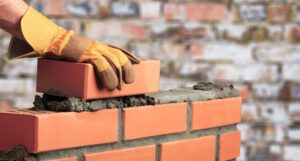When building a house, Brick Masonry Charleston SC can be a great choice. These structures are very durable and come in a wide variety of shapes and sizes. Brick masonry can also be a great way to add character to your home. You can use these materials in any structure, whether it is a house, a business, or a church.
In brick masonry, an English bond is a wall constructed by alternating courses of stretcher and header bricks. This method creates walls with strength in both directions because the bricks are interlocked by design. English bond bricks are generally used for load-bearing walls. The English bond is one of the most durable types of bricks.
There are two types of brick bonds: English bonds and Flemish bonds. Both methods consist of alternating courses of headers and stretchers. The English bond is stronger than the Flemish bond, but both are useful for aesthetic purposes. The English bond is the most common type of brick bond used in brickwork.
This type of bond uses alternating courses of headers and stretchers to make the wall look more uniform. This method makes it easier to lay than the Flemish and Dutch bonds. Another type is the herringbone bond, which uses two alternating courses of headers and stretchers. The difference between the two types of bonds is the spacing between the headers and stretchers.
The Flemish bond is slightly stronger than the English bond but is more aesthetic. It is often used for wall thicknesses of 1.5 bricks or more. It also requires less expensive bricks for the backing and facing, but it still requires high-quality workmanship and careful supervision. It’s important to choose a bond that meets your requirements.
English bond bricks have strong mortar joints and provide good support to bricks. Old brickwork can be restored using this type of bond. The English bond can also be used on walls of any thickness, making it the most versatile type of brickwork. English bond bricks come in a wide range of colors. They are also less expensive than header bond bricks and require less skilled labor.
Another type of bond is the diagonal bond. This is the most common type of brick bond and is preferred for walls that are two to four bricks thick. Its horizontal joints should be parallel so that they are able to meet in a horizontal plane. In masonry, this type of bond is a great way to make the wall stronger in corners.
Another style of brick masonry is known as the Flemish bond. This type of bond consists of alternating headers and stretchers. The English bond is simpler and easier to install than the Flemish bond. On the other hand, the Flemish bond is more durable than the English bond.
A single Flemish bond is not used in brick masonry that is less than one brick thick. This type of bond requires more skill when arranging bricks to get the perfect pattern. It is also used on facework. It is not as strong as the English bond, but it has a better look than the other two.
The Single Flemish bond in brick masonry is the same as the English bond. It is often used in the construction of thick walls. In this bond, the facing and backing bricks are of different thicknesses. This creates an uneven load distribution and uneven settlement of the wall. However, this bond is easy to install because it uses no mortar and is not very visible.
The Flemish bond is more complex and requires more expertise to lay. It includes vertical mortar joints and closers, which are inserted on alternating courses next to the quoin header. It is also less dense than the English bond, so it requires a skilled masonry team to lay it with accuracy. However, this bond has an advantage over the English bond because it is more aesthetic and requires fewer bricks.
The Flemish bond is more attractive than the English bond, which does not have a stretcher. It has a more uniform appearance than the English bond and is, therefore, more popular. Single Flemish bonds, on the other hand, consist of one facing of a double Flemish bond, and the other facing is a single English bond.

